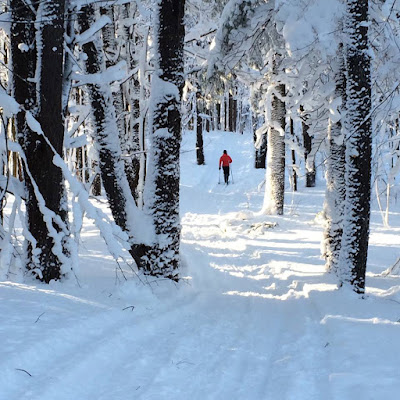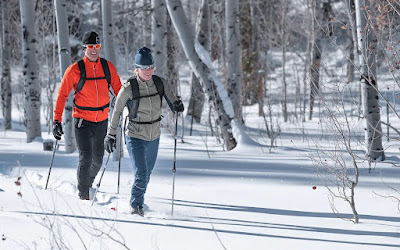I'm like a hungry man about to sit down to a hearty four-course meal.
That's how I'm feeling on the eve of what I reckon is my 38th trip to Mexico.
As beautiful as Minnesota winters can be, they starve us of sensation.
Against this backdrop of bland whites and grays and taupes, we're
challenged to find the sustenance of color in detail and nuance—like a
rosy cheek or a tenacious crabapple. Smells are served unseasoned,
frozen in midair. Sound, too, seems squeezed of its luscious fullness
like dried fruit. Even touch is blunted by layers of nylon, feathers and
fleece.
In most of Mexico, including Zihuatanejo, Guerrero where I'm headed,
climate and culture collaborate to nourish one with colors, sounds,
smells and flavors.

The colors: a Minnesotan would be dragged before the neighborhood
association for painting his house these vivid shades of pink, blue or
gold. The smells: so often they reveal, where sights may not, the real
life that's going on beyond the sphere of one's sanitized tourist
experience. The tastes: there's nothing dried or preserved about them;
they're fresh and true and sometimes surprising. And the touch, oh, the
caress of that soft, delicious air pouring in over the Pacific!
The sensations of Mexico stir in me
a subtle sense of urgency.

Maybe that's it; maybe it's the warmth that unlocks both stimuli and
senses. Belying the laid back, unhurried lifestyle, the sensations of
Mexico stir in me a subtle sense of urgency. A mango, for example, just
picked from the tree outside our villa door, is such a beautiful form
just to look at. But no sooner than it begins to blush with full color
you have to eat it or it loses its tang and turns to mush. So many
beautiful things are transient.
And Zihuatanejo's a place of seamless flow between indoor and outdoor
life. With little notion of that confinement we Minnesotans suffer
during winter, you sense everything going on —in El Centro, down at
Playa La Ropa out on Zihuatanejo Bay—and want to be a part of it all.
But it's okay; anything you do—even nothing at all—feels completely
satisfying, completely nourishing of body and spirit.
Monday, February 27, 2023
OFF TO MEXICO – Yum-m-m!
Monday, February 13, 2023
SLEEPING AROUND – My Gradual Turn From Back Sleeper to Stomach
Ever since my back problems began—sometime in my 40s if memory serves—I’ve heard and read that sleeping in any position other than on one’s back is asking for trouble. And I pretty much heeded that advice.
Yet my recurrent back pain persisted, the payback, I assume, for all those years of contact sports—and likely a head butt or two from genetics.
By 2013, things were getting pretty bad. It wasn’t just poor sleep; now I was experiencing phantom pain radiating out to my hip and down my leg. Walking more than a hundred yards was too much to bear.
So in 2015 I had surgery at the Mayo Clinic to remove parts of one lumbar disk pressing on a nerve, and to stabilize a few malaligned vertebrae with four three-inch titanium screws. I walked away from that surgery a new man. But, as my surgeon cautioned me, even though I’d be free of the referred hip pain I’d still be a guy with a bad back.
After that, back sleeping seemed more sensible than ever. In fact, due to this surgery and a previous fusion in my cervical spine, any other position was quite uncomfortable.
Has something changed with my anatomy?
Or do I just have a screw loose?
DONE TO A TURN
Flash forward to 2022. For some inexplicable reason, I was starting to wake up quite often during the night with an urgent need to change position from back to side. As the year went along, the trend continued: less time on my back; more on my sides.
Then, just in the past few months, while I’m still spending most of the night side-sleeping, the “rotisserie” has been turning me another 90 degrees. I now find myself on my stomach several times every night. To my surprise, that’s now become the most comfortable position for me—at least for a few minutes until that yearn to turn sets in again.
I’m baffled. Has something changed with my anatomy? Is it my mattress going soft on me? Or do I just have a screw loose? What do you think? We'd love to hear of your tossings and turnings.
Wednesday, February 8, 2023
ON THE LEVEL – The Truth About Cross-country Skiing

He’s the picture of concentration and resolve, ready for action.
But the ground the little skier stands on is depicted by a prominent horizontal line across the bottom of the scene. Except at one point where just the tips of his skis hang out over a moderately steep, one-foot drop-off.
The headline reads: Ski Minnesota!
GRAVITY, SCHMAVITY
The problem with alpine—downhill—skiing in Minnesota is that there’s just too much gravity and no place for it to go. For a decent run, you need at least 500 feet of vertical drop, which very few slopes in the state have. (By comparison, better ski resorts in Vermont boast of a couple thousand feet of drop; in the Canadian and U.S. Rockies, some have nearly a vertical mile.)
That’s just one of the reasons I love Nordic—cross-country—skiing. You don’t need no stinking’ mountain. And there are also the facts that it’s kinder to one’s body, costs far less and provides its own kind of patient, level-headed beauty.
In downhill ninety-five percent of the effort goes into controlling the force of gravity. In cross-country, nearly all your energy’s devoted to creating your own force, propelling yourself, mostly horizontally, from point A to point B.
It’s like the difference between skydiving and flying, white-water rafting and lake canoeing, an eagle and a swan.
GET A GRIP
Alpine skis are designed essentially to do two things: slide on snow with as little friction as possible, and carve turns. Nordic skis—specifically classic-style cross-country skis—also have to glide, but only in one direction. They employ one of several devices to make them slide forward easily, but grip going backward.
That grip is achieved in one of several ways: One is the application of special waxes, each formulated to grab the snow under certain temperature and snow texture conditions. There are also a couple of mechanical devices to accomplish the same grip-and-glide. They entail either a fish-scale texture embossed into the middle third of the skis’ bottoms, or “skins,” strips of real or synthetic mohair, which has a distinct grain.
For a classic-style cross-country skier the motion is very much like that of walking; there are distinct strides. As you extend one ski in front of you, you transfer your weight to the other ski and push it back. To maximize the amount of grip you get on the snow with that pushing ski, you add a downward force with a subtle stomp or “kick” off the toe of your boot. That makes whatever grip device you’re using bite into the snow.
That constant heel-toe alternation means cross-country ski boots have to be very different from the rigid, cast-like grip of alpine boots. Cross-country boots are much lighter and more flexible, their only point of attachment to the skis at the
very toe.
Cross-country’s more constant, repetitive nature
allows one to escape into the rhythms of one’s
own breathing and heartbeat.
RHYTHM METHOD
Downhill skiing employs the large muscles of the thighs and buttocks primarily as shock absorbers. There are G forces involved. And the poles are used mostly for balance and pivoting.
But classic-style Nordic skiing actually employs more muscle groups and burns more calories than downhill.* One reason for this is that the poles, driven by one’s arms and shoulders, are vital to providing propulsion with every stride.  Besides the physical aspects of the two types of skiing, there are important mental/spiritual differences. While alpine skiing may give one more of an adrenaline rush, Nordic skiing’s benefit, the regular pulse of push and glide, and the whispery sounds, is more of a meditative or spiritual one.
Besides the physical aspects of the two types of skiing, there are important mental/spiritual differences. While alpine skiing may give one more of an adrenaline rush, Nordic skiing’s benefit, the regular pulse of push and glide, and the whispery sounds, is more of a meditative or spiritual one.
Skiing downhill, you’re constantly navigating around obstacles and changes in terrain. Cross-country’s more constant, repetitive nature allows one to escape into the rhythms of one’s own breathing and heartbeat.
The older I get, the brittler my bones, the more I love the sport’s serenity. There’s nothing quite like the sense of oneness with one’s body and with Nature when you’ve skied far ahead of your group and stop to wait for them. You feel fully alive, in perfect balance, fully immersed in wonder.
A GOOD WINTER
If the trail is groomed, you have nice, neat grooves to guide those long, narrow skis. So most hills are a breeze, at least going down. But if there happens to be a tight curve at the bottom, or if, God forbid, folks have decided your ski track is a nice place to snowshoe or walk their St. Bernard, all bets are off. If you’re out of practice, your skis can easily jump the tracks and send you careening into the woods.
If there are no groomed tracks, you have to break trail, and that’s a whole different animal. Kind of a combination between skiing and snowshoeing, it’s a challenge to one’s stamina, balance and patience. But the reward is knowing that each subsequent skier who comes along will benefit from your labors.
It’s all part of sport of Nordic—cross-country—skiing. If you haven’t tried it this is a good winter for it, at least here in Minnesota. With over a foot of accumulated base and an inch or two of new snow every few days, and very few below-zero days, conditions have been ideal.
If you’re ready to jump—or should I say slide—in, local ski shops should be discounting their cross-country ski gear soon. If you’re not ready, equipment’s available to rent at many ski areas, public parks and ski shops. Either way, I hope to see you out there soon!
* DOWNHILL SKIING – A person weighing 150 pounds can expect to burn 360-570 calories in an hour of skiing. Downhill can be an intense workout for your core and legs, especially as you hit moguls, deeper powder, or jumps.
CROSS-COUNTRY SKIING – A 150-pound person will burn 500-650 calories per hour. Cross-country is a slow but constant burn, keeping your body working every step of the way.
“Downhill vs. Cross Country: The Ski-Booted Battle” – by Brian Hanford, Nov. 30, 2015 – EatFitFuel.com








